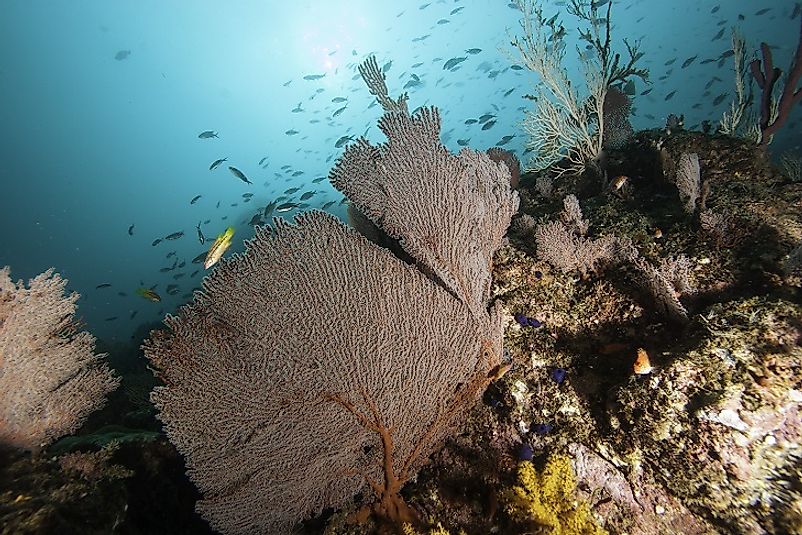Coiba Island - Uniqe Places Of Panama

5. Description
Off the coast of mainland Central America in the Pacific Ocean, there is a group of 38 islands where nature is still preserved in her pristine form and natural resources flourish with minimum human intervention on these islands. The Coiba Island is one among these islands, formally being a part of Montijo District of the Veraguas province of Panama. This island, with a land area of 503 square kilometers, together with 37 other islands forms the Coiba National Park, a UNESCO World Heritage Site covering a total area of around 430,825 acres.
4. Historical Role
It is estimated that 12,000 to 18,000 years ago, the Coiba Island drifted away from mainland Panama and its animals and plants also started evolving in their own unique manner in the island. Later, the island was inhabited by the Cancique Indian tribes till the arrival of the Spaniards in 1560 who started wiping out the Indians in large numbers and also recruiting them in the slavery trade. A penal colony was established on the island in 1919. The prison on the Coiba island soon became one of the most infamous prisons of its time which was much feared for the way the prisoners were punished, tortured and killed in the prison. It is estimated that hundreds of people met their death in the prison which after its close-down in 2004, began to be regarded as a haunted place. A legend even says that a prison guard who was chasing a prisoner and discovered it was a ghost also died by killing himself. After the shutdown of the prison, the island was turned into a nature reserve, and in 2005 it was included as part of the Coiba National Park.
3. Modern Significance
Currently, the Coiba Island is a treasure trove of rare and endemic species of flora and fauna conserved in their pristine habitat in the park. No anthropogenic activities, with the exception of tourism, are allowed in the park. The Autoridad Nacional del Ambiente (ANAM) is presently endowed with the management responsibilities for the park, and only tourists with permits from ANAM are allowed to enter the park. The nearest mainland point of access to the island is Santa Catalina, from where a one-and-a-half hour boat ride drops tourists off at Coiba where they can enjoy exploring the island, scuba diving, or fishing. The only overnight stay option at the island is at the ANAM ranger station.
2. Habitat and Biodiversity
The Coiba Island has a rich biodiversity with a wide variety of flora and fauna inhabiting the undisturbed habitat of the island. Both rainforests and mangrove forests are present on this island, housing primates like white-faced monkeys and howler moneys, and avian fauna like the scaly breasted hummingbird, the white-throated thrush, lance railed manakin, red-rumped woodpeckers, king vultures, and scarlet macaws, as well as a number of mollusks, crustaceans and other tidal marine life near the island’s beaches. The island is also famous for its high number of endemic species like the endemic brown-backed dove, the Coiba spinetail, the Coiba Island howler monkey and the Coiba agouti. The seas around the island also thrive with marine life, including one of the largest coral reefs of the Pacific Coast of the Americas.
1. Environmental Threats and Territorial Disputes
Though the territorial species on Coiba Island are protected well with very little human intervention allowed on the island and no human activities with the exception of tourism is permitted, the seas around the island are not so safe. The marine species in the waters of the Pacific surrounding the island often get entangled in fishing gear resulting in their death in large numbers. There is thus need to curb illegal and irresponsible fishing practices near the island. Unchecked tourism could also adversely affect the sanctity and peace of the island and its species and hence should be kept under strict scrutiny.











